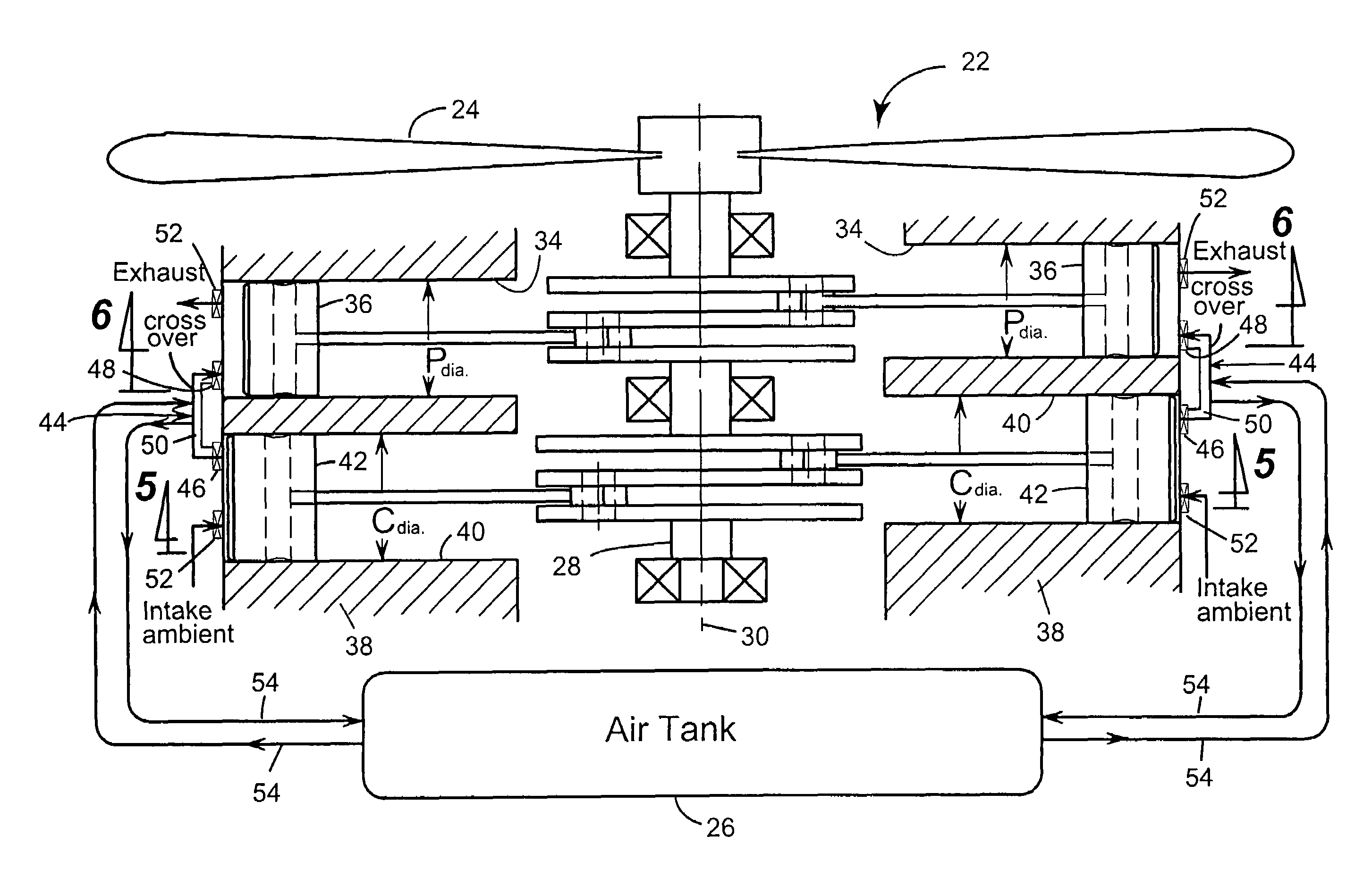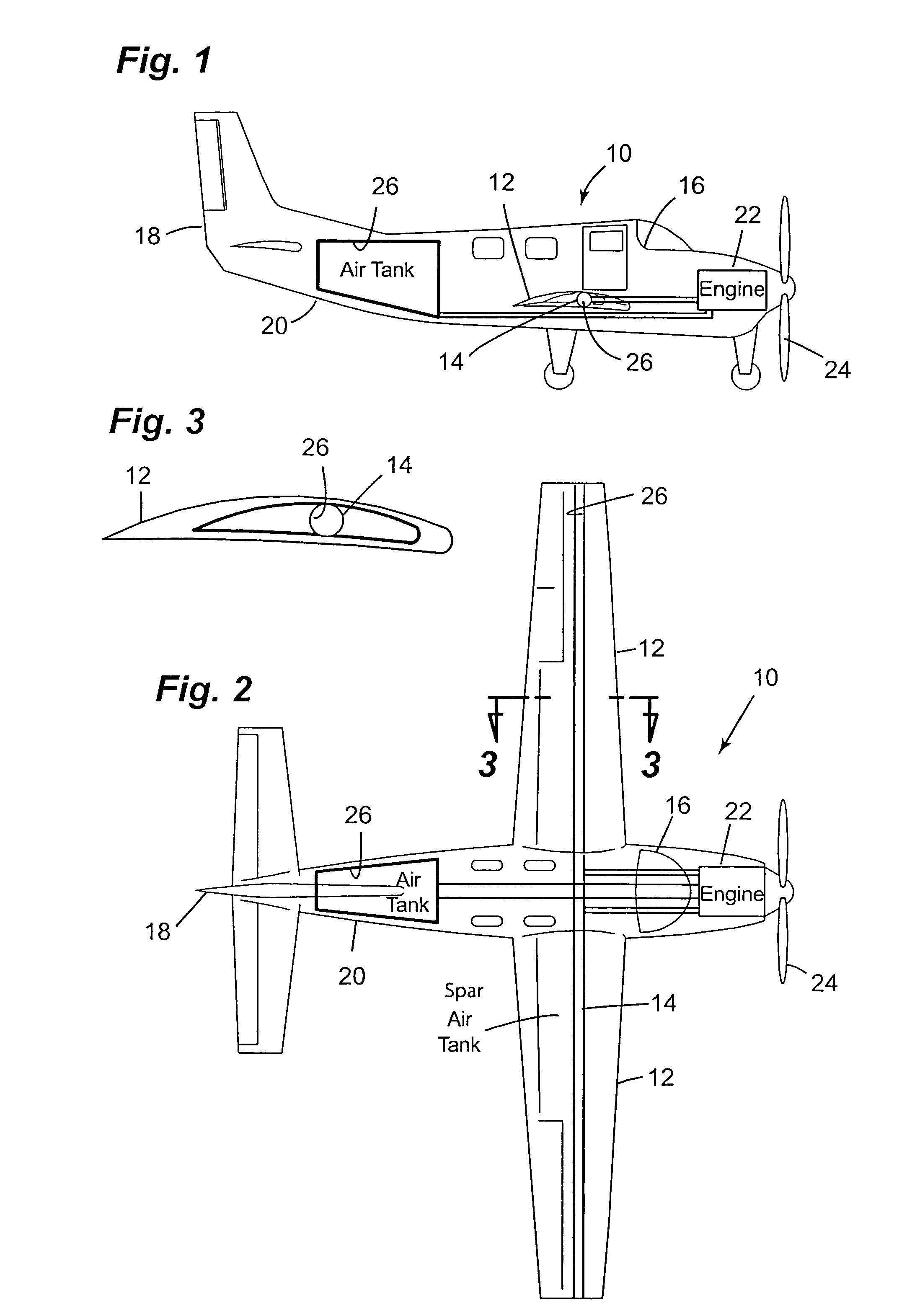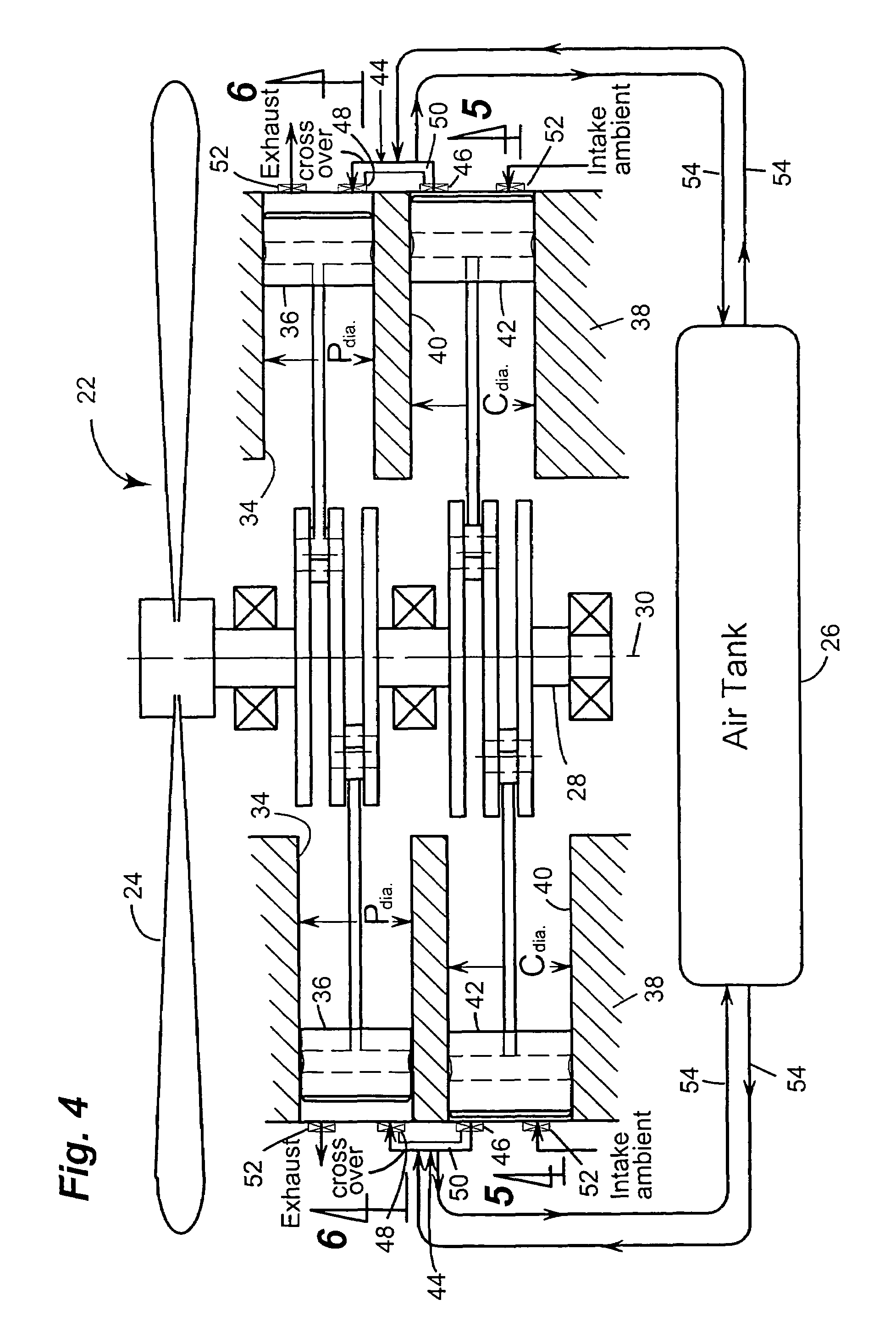Split-cycle aircraft engine
a technology of aircraft engines and cylinders, which is applied in the direction of machines/engines, positive displacement engines, mechanical equipment, etc., can solve the problems of noisy conventional radial engines, affecting the flight of aircraft, and consuming more oil than other engine designs, so as to reduce the friction between the piston and the seat, and increase the torque of the engin
- Summary
- Abstract
- Description
- Claims
- Application Information
AI Technical Summary
Benefits of technology
Problems solved by technology
Method used
Image
Examples
Embodiment Construction
[0037]Referring now to the drawings in detail, numeral 10 generally indicates a propeller-driven aircraft. As illustrated in FIGS. 1 through 3, the aircraft 10 has a pair of wings 12, a wing spar 14 in the wings 12, a cockpit 16, a tail 18, and an aft fuselage 20. The aircraft 10 may have one wing spar 14 spanning both wings 12, or a separate wing spar may be located in each wing 12. A split-cycle engine 22 in accordance with the invention is mounted in the aircraft 10 forward of the cockpit 16 to drive the propeller 24. Air storage tanks 26 may be located in the wing spar 14, the aft fuselage 20, or both. The air storage tank(s) may also be located in any other suitable location within the aircraft 10, for example, in a suitable location within the wings 12 other than the wing spar 14.
[0038]Turning first to FIGS. 4 through 9, in one embodiment of the invention, the split-cycle engine 22 may be a horizontally opposed (“boxer”) type split-cycle engine. The split-cycle boxer engine 22...
PUM
 Login to View More
Login to View More Abstract
Description
Claims
Application Information
 Login to View More
Login to View More - R&D
- Intellectual Property
- Life Sciences
- Materials
- Tech Scout
- Unparalleled Data Quality
- Higher Quality Content
- 60% Fewer Hallucinations
Browse by: Latest US Patents, China's latest patents, Technical Efficacy Thesaurus, Application Domain, Technology Topic, Popular Technical Reports.
© 2025 PatSnap. All rights reserved.Legal|Privacy policy|Modern Slavery Act Transparency Statement|Sitemap|About US| Contact US: help@patsnap.com



